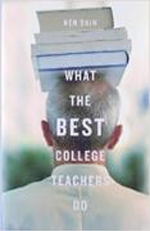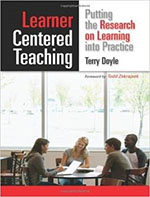Who are you teaching?
One of our most important tasks in the opening stages of a semester is to learn as much as we can about our students—and not just about their prior knowledge. We can help them learn best if we also get to know them as human beings. Hammond (2015) and Immordino-Yang (2015) both note that social acceptance is crucial for learning, freeing up cognitive resources for deep processing. Humans are social animals, and our brains react to social threat in the same way they react to physical threat: with a flood of cortisol that impedes reflective thinking, and inhibits learning. In order to take intellectual risks, students need a sense of community and security; building that kind of rapport starts with getting to know our students–and helping them get to know each other. (Here are some tips for learning names. You can get a printable photo roster through myfsu.)
Even in a large class, you can glean a good bit with a survey—whether through Qualtrics or surveymonkey; or in class with clickers or PollEverywhere. Your questions can be both humanizing and relevant to the learning they’ll be doing. You might want to know what previous courses your students have most enjoyed, how far away their families live, how much they exercise, how many languages they speak, or countless other details that will shape their experience in your class. If you’re using clickers or polling software, you can even ask sensitive questions anonymously.
If you have manageable numbers, reflective writing is extremely useful, as are “introductory cards.” Students can make brief podcasts or introductory videos to post to Canvas. An exercise that asks them to identify what they’re good at, or feel confident doing–and how they got that way–can be a great way to learn about your students while building their self-efficacy. Discovering what excites them will lend you powerful tools for keeping them motivated. Asking students to share a funny experience, or the best and worst things that happened to them over break, can get them laughing, which promotes trust and community.
Arriving early to your classroom to chat with students, or staying late, is a perennial strategy for finding out what they’re thinking, and helps them see that you’re interested in them. If you can invest more time, having lunch with small groups of students will provide remarkable opportunities for connecting. Even if you’re not as intrepid as KSU anthropologist Michael Wesch, who decided to become a participant-observer in his students’ lives, and you don’t have the time to shadow a student, you can show your genuine curiosity and care.
Joshua Aronson, a social psychologist at NYU, argues that curiosity–simple human curiosity about each other’s individual lives and experiences–is one of the most important antidotes to the stereotypical thinking that often divides us. Certainly, as Wesch discovered, we may find that our assumptions about students’ abilities and motivations are mistaken.
Welcome back! Best wishes for a semester full of discovery and accomplishment.
Spring 2018 Reading Groups
Co-facilitated by PIE and CAT
Reading groups are a great chance to meet and share ideas with colleagues from across the university. We’ll discuss great texts about teaching and learning, and generate practical ideas for enriching our own classroom practice. Each group involves a series of three meetings, so please check your calendar.
What The Best College Teachers Do
Mondays 3:00-5:00
1/29, 2/5, 2/12
 Ken Bain wanted to know how some faculty manage to “make a sustained, substantial, and positive influence on how [THEIR] students think, act, and feel.” How do some faculty consistently provoke deep learning, while the rest of us merely have good intentions? Bain conducted a fifteen-year study of a hundred extraordinarily effective teachers, to see how they help their students learn. The book traces how these exceptional teachers approach their subjects, their students, and the process of learning. RSVP here.
Ken Bain wanted to know how some faculty manage to “make a sustained, substantial, and positive influence on how [THEIR] students think, act, and feel.” How do some faculty consistently provoke deep learning, while the rest of us merely have good intentions? Bain conducted a fifteen-year study of a hundred extraordinarily effective teachers, to see how they help their students learn. The book traces how these exceptional teachers approach their subjects, their students, and the process of learning. RSVP here.
Learner-Centered Teaching
Wednesdays 3:00-5:00
3/21, 3/28, 4/4
 Recent decades have brought a wealth of research on learning and cognition; these developments are gradually making their way into work on best practices for the college classroom. Doyle’s Learner- Centered Teaching: Putting the Research on Learning into Practice is a practical guide to strategies for making effective use of the research. When we adjust our classroom focus from teaching to learning, we make our own work more gratifying, and we can enhance our students’ learning experience as well as their mastery of material. The group will generate specific strategies and activities for enriching our own classrooms. RSVP here.
Recent decades have brought a wealth of research on learning and cognition; these developments are gradually making their way into work on best practices for the college classroom. Doyle’s Learner- Centered Teaching: Putting the Research on Learning into Practice is a practical guide to strategies for making effective use of the research. When we adjust our classroom focus from teaching to learning, we make our own work more gratifying, and we can enhance our students’ learning experience as well as their mastery of material. The group will generate specific strategies and activities for enriching our own classrooms. RSVP here.



